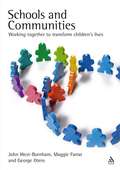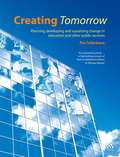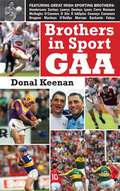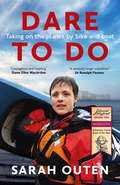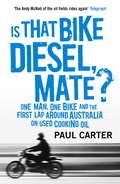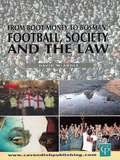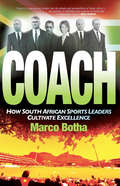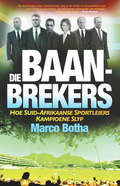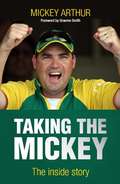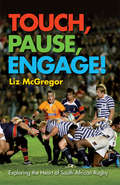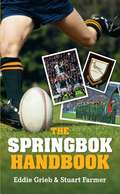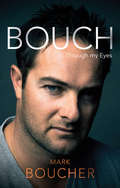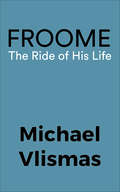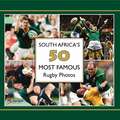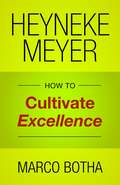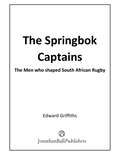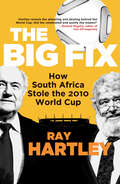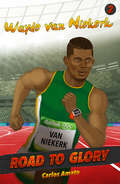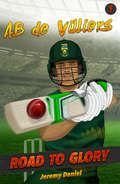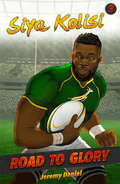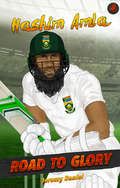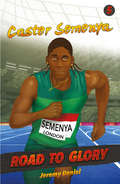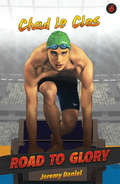- Table View
- List View
Schools and Communities: Working together to transform children's lives
by John West-Burnham Maggie Farrar George OteroThis book is rooted in the principle that every child and young person has a fundamental entitlement to equal educational opportunities. Human relationships are fundamental to educational and social development and increasing importance is being attached to cooperation and collaboration between schools and the community, and between the agencies that provide services for children and young people.
Creating Tomorrow: Planning, developing and sustaining change in education and other public services
by Pat CollarboneThis book is about workforce modernisation and cultural change. In the last few years, remodelling has been taking place in UK schools and in local authorities, children's centres, and locally based agencies and services that support young people. Some of these organisations have worked through the remodelling process but others need to and would benefit from doing so. The book will be of benefit to all as its primary focus is on sustainable change rather than simply getting started. Work has recently begun on remodelling in the Further Education sector.
Brothers in Sport GAA: GAA Family Dynasties (Brothers In Sport Ser.)
by Donal KeenanIn a game rich with sibling talent and ability, Donal Keenan offers a fascinating examination of some of the game's remarkable family relationships. Profiling some of Ireland's most famous hurling and football brothers, Brothers in Sport provides an insight into the lives of these well-known sporting brothers. Including interviews with the Ó hAilpíns, the Earleys and the Canavans, as well as memories of past heroes like the Foleys and the Rackards, these profiles reflect the triumphs and disappointments of sporting brothers from across the country throughout their careers.
Brothers in Sport GAA: GAA Family Dynasties
by Donal KeenanIn a game rich with sibling talent and ability, Donal Keenan offers a fascinating examination of some of the game's remarkable family relationships. Profiling some of Ireland's most famous hurling and football brothers, Brothers in Sport provides an insight into the lives of these well-known sporting brothers. Including interviews with the Ó hAilpíns, the Earleys and the Canavans, as well as memories of past heroes like the Foleys and the Rackards, these profiles reflect the triumphs and disappointments of sporting brothers from across the country throughout their careers.
Dare to Do: Taking on the planet by bike and boat
by Sarah OutenSHORTLISTED FOR THE EDWARD STANFORD ADVENTURE TRAVEL BOOK OF THE YEAROn 1 April 2011, rower and adventurer Sarah Outen set off in her kayak from Tower Bridge for France. Her aim was simple: to circle the globe entirely under her own steam - cycling, kayaking and rowing across Europe, Asia, the Pacific, North America, the Atlantic and eventually home. A year later, Sarah was plucked from the Pacific ocean amid tropical storm Mawar, her boat broken, her spirit even more so. But that wasn't the end. Despite ill health and depression, giving up was not an option. So Sarah set off once more to finish what she had started, becoming the first woman to row solo from Japan to Alaska, as well as the first woman to row the mid-Pacific from West to East. She kayaked the treacherous Aleutian chain and cycled North America, before setting out on the Atlantic, despite the risk of another row-ending storm...Dare to Do is more than an adventure story. It is a story of the kindness of strangers and the spirit of travel; a story of the raw power of nature, of finding love in unexpected places, and of discovering your inner strength. It is about trying and failing, and trying again, and about how, even when all seems lost, you can find yourself.
Is that Bike Diesel, Mate?: One Man, One Bike, and the First Lap Around Australia on Used Cooking Oil
by Paul CarterOi, mate, is that monstrosity diesel? From the author of the bestsellers Don't Tell Mum I Work on the Rigs, She Thinks I'm a Piano Player in a Whorehouse and This Is Not a Drill, this is the eagerly awaited next installment of Paul Carter's rollicking life.Take one mad adventurer and a motorbike that runs on bio fuel (cooking oil i.e. chip fat to you and me) and send them with one filmmaker on a road trip around Australia just to see what happens. What you get is a story full of outback characters, implausible (but true) situations, unlikely events and unfortunate breakdowns, all at a break neck pace. Never one to sit still for long, this is what Paul Carter did next.Whether you've been shocked, delighted, entertained, horrified - or all of the above - by Paul's stories whether from oil rigs or the road one thing is for sure, they are always high octane adventures.
Football Society And The Law: From Boot Moeny to Bosman (PDF)
by David McArdleThis text provides a new dimension to the exciting and rapidly expanding field of sport and the law. David McArdle contemplates laws influence over the development of football between the founding of the English Football League in 1888 and the European Court of Justices seminal ruling in the Bosman case over a century later. From Boot Money to Bosman provides insights into how the law on violence and consent impacts upon acts of on-field violence,the courts role in securing players a greater degree of contractual freedom and the football governing bodies responses to player power. It also looks at the games, and the legislatures, attempts to prevent hooliganism and racism and considers the impact of the move towards all-seater stadia in the wake of the Hillsborough disaster. The book provides information on how race and sex discrimination law impact upon footballs employment practices, explains why the sports governing bodies are immune to public law remedies such as judicial review (but are possibly not immune the provisions of the Human Rights Act 1998) and exhorts footballs governing bodies to take the lead in participant protection initiatives. Lucid and thought-provoking, this book will be required reading for sports studies students and particularly those who are concerned with football and the law. It will also appeal to people working within the football industry and others who wish to understand how the law has influenced, and will continue to influence, the development of football.
Football Society And The Law: From Boot Moeny to Bosman
by David McArdleThis text provides a new dimension to the exciting and rapidly expanding field of sport and the law. David McArdle contemplates laws influence over the development of football between the founding of the English Football League in 1888 and the European Court of Justices seminal ruling in the Bosman case over a century later. From Boot Money to Bosman provides insights into how the law on violence and consent impacts upon acts of on-field violence,the courts role in securing players a greater degree of contractual freedom and the football governing bodies responses to player power. It also looks at the games, and the legislatures, attempts to prevent hooliganism and racism and considers the impact of the move towards all-seater stadia in the wake of the Hillsborough disaster. The book provides information on how race and sex discrimination law impact upon footballs employment practices, explains why the sports governing bodies are immune to public law remedies such as judicial review (but are possibly not immune the provisions of the Human Rights Act 1998) and exhorts footballs governing bodies to take the lead in participant protection initiatives. Lucid and thought-provoking, this book will be required reading for sports studies students and particularly those who are concerned with football and the law. It will also appeal to people working within the football industry and others who wish to understand how the law has influenced, and will continue to influence, the development of football.
Coach: How South African Sport Leaders Cultivate Excellence
by Marco BothaAt 34, Heyneke Meyer was fired as head coach of a Super Rugby team for the second time. But when on 19 May 2007 his Bulls side became the first South African team to capture the Super title, the dark years at Loftus Versfeld were suddenly forgotten. And Meyer was regarded as the coach among coaches. Because it is there - on the playing field - that coaches and players are judged. And yet the scoreboard never tells the full story of how people achieved success overnight'. In Meyer's case it was an arduous journey of more than seven years during which he defined and changed professional rugby. This is leadership. And leadership is what Coach is about - people who have fundamentally changed a sport, an industry, a way of thinking, and, ultimately, lives. Marco Botha sat in conversation with some of South Africa's foremost sports leaders and interprets their diverse success stories in his narrative writing style. From Meyer to Brendan Venter, who helped turn Saracens into a super club and the Sharks into the 2013 Currie Cup champions. As an international hockey player, Sherylle Calder noticed something special' about her own visual abilities and researched this together with Professor Tim Noakes. The Eye Lady' was instrumental in England (2003) and South Africa (2007) winning the Rugby World Cup and Ernie Els bagging his second British Open golf title in 2012. Former Springbok Sevens coach Paul Treu advanced rugby sevens as a world sport by regularly getting his team to tower above seemingly superior sides. One innovation at a time. Gary Kirsten and Paddy Upton guided the Indian national cricket team to glory with a leadership style that empowered players and developed them as human beings - the new school' of coaching. With the same approach they helped the Proteas become the number one team in the world in all three formats of the game. These remarkable leaders have made champions out of ordinary people. And the reasons for this will certainly surprise you . . .
Die Baan-Brekers: Hoe Suid-Afrikaanse sportleiers kampioene slyp
by Marco BothaHoe Suid-Afrikaanse Sportleiers Kampioene Slyp. Heyneke Meyer was 34 jaar oud toe hy vir die tweede keer as die hoofafrigter van 'n Superrugby-span afgedank is. Maar toe sy Bulls-span op 19 Mei 2007 die eerste Suid-Afrikaanse span word om die Super-titel te wen, was die donker jare op Loftus Versfeld skielik vergete en Meyer oornag almal se breier sonder gelyke'. Want dis net daar - op die speelveld - dat afrigters en spelers beoordeel word. En tog vertel die telbord nooit die volle verhaal van hoe mense oornag' sukses behaal het nie. Vir Meyer was dit 'n strawwe reis van meer as 7 jaar - 'n tydperk waarin hy beroepsrugby gedefinieer en verander het. En dit is leierskap. En leierskap is waaroor Die Baanbrekers gaan - mense wat 'n sportsoort, 'n bedryf of 'n manier van dink en uiteindelik daardeur ook lewens onherroeplik verander het. Marco Botha het met van Suid-Afrika se vernaamste sportleiers gesels en hy ontleed hier hul uiteenlopende suksesverhale. Van Meyer tot Brendan Venter, wat van Saracens 'n superklub en in 2013 van die Haaie die Curriebeker-kampioen gehelp maak het deur 'n kultuur te vestig waar gelukkige mense belangriker as silwerware geag word. Ook die voormalige Springbok-sewesafrigter Paul Treu het die blitskode as 'n wêreldsport bevorder deur sy span gereeld met innovasie op innovasie bo oënskynlik baie beter spanne te laat uittroon. Gary Kirsten en Paddy Upton het die Indiese en daarna die Suid-Afrikaanse krieketspan na wêreldoorheersing gelei met 'n leierskapstyl wat spelers bemagtig en as mense ontwikkel het - die nuwe skool' van afrigting. Hierdie merkwaardige leiers het van gewone mense kampioene gemaak. En die redes daarvoor gaan jou beslis verras . . .
Taking The Mickey
by Mickey Arthur Neil ManthorpMickey Arthur was one of SA's longest-serving and most successful coaches. In 2008, along with the national team, he created history when the Proteas beat both England and Australia on their own turf. Beating Pakistan away from home the year before, set in motion an unprecedented journey to the number one ranking in both ODI and Test cricket. Since the world ranking system was introduced to international cricket, Australia has been the only other team to achieve this feat. In 12 tours 'down under' spanning almost a century, South Africa has never managed to win a Test series in Australia. But Arthur, captain Graeme Smith and the rest of the team overcame incredible odds to chase a toal over 400 in the first Test in Perth. They faced what seemed certain defeat in Melbourne to win again and take an unbeatable 2-0 series lead. South Africa became the top ranked team in Test cricket, finally unseating the mighty Australians who dominated for years. Soon after, they repeated this feat when they became the top ranked ODI team. But behind the scenes, things weren't always progressing smoothly. Whereas Arthur would do anything for the team, his umcompromising approach to administrators and refusal to be dictated to by men he believed were 'out of touch', was beginning to count against him. Not surprisingly, the Proteas failed to live up to the heights of 2008. They suffered the ignominy of a first rount exit from the Champions Trophy at the beginning of the 2009 season. Soon after, they had to win the final Test of a four-match series against England to salvage a draw. But there was nothing ominous about the players' collective form and spirits were high as the squad prepared for a tour to India. The tour was to all intents and purposes a Test match 'world championship' between the two nations ranked first and second in the world. A week before the team's departure, Arthur 'resigned'. He was given no choice. A press conference was hastily called in his home town of East London and Smith flew from Cape Town to appear alongside him and quash rumours of deterioration in their personal relationship. Arthur never elaborated on the reasons for his untimely dismissal. Until now...
Touch, Pause, Engage!: Exploring The Heart Of South African Rugby
by Liz McgregorSouth Africa is a land of contrasts, as the tourist brochures promise, and this is true for the game of rugby. From the Pretoria heartland to the aspirant Eastern Cape, from the hardscrabble Cape Flats to the islands of privilege at Bishops and Grey College. No other rugby-playing nation has to grapple with so much diversity. Different languages, classes, races and cultures - each bearing the wounds of the country's fractured past - have to be melded into winning teams. Liz McGregor has spent the past three years shadowing Currie Cup, Super 14 and Springbok teams across the country, and has come to the conclusion that it is this very diversity, combined with the pain of the past and the dreams of a great united future, that provide the elusive alchemy that separates a good team from a great one. Touch, Pause, Engage! is more than a book about rugby. It is an intimate look at how South Africa's erstwhile elite is adapting to its new circumstances. Team South Africa has been through many a maul and bruising scrum, but is inching closer and closer to the tryline. Liz McGregor is a veteran author and journalist who started off her career on leading South African newspapers and subsequently moved to Britain where she worked for the Guardian for several years. Her first book, Khabzela: The Life and Times of a South African, laid bare the complex reasoning behind a DJ's refusal to take medication to stave off AIDS. She has co-edited and contributed to two collections of essays: At Risk and Load-shedding.
The Springbok Handbook
by Eddie Grieb Stuart FarmerThis fact-filled handbook will: • Give you information on all past Rugby World Cup encounters • Amaze your mates with Springbok statistics past and present • Provide you with hours of entertaining reading • Help the Bokke win the next World Cup! Okay, the last point might be an exaggeration. But The Springbok Handbook does contain everything there is to know about our team, from the very first match played in 1891 to the present. It's all here, everything you wanted to know about the 'Bokke' - including a special section on the World Cup.
Bouch: Through my eyes
by Mark Boucher Neil ManthorpWhen Mark Boucher played one of his first games of cricket for South Africa, a senior player took him aside and bluntly told him he was the worst wicketkeeper ever to play in the national side. Over a decade later, when Bouch finally retired with a plethora of records under his belt and to huge acclaim from the public, he took grim satisfaction in relating this piece of history. Through my Eyes is the story of a man with remarkable sporting prowess. Born into a sports-mad family in East London, he excelled in squash, tennis and rugby before choosing cricket as his preferred sport. His extraordinary achievements on the field are well known - he was voted SA player of the year in 1998, 2000 and 2006. What is not so well known, and makes up much of this book, are the behind-the-scenes stories and anecdotes. Stories of staring down the barrel of defeat and of celebrating victory; of developing strong bonds with teammates Graeme Smith, Jacques Kallis and others that go way beyond mere friendship. What emerges is the image of a man who always fought for the underdog, whose never-say-die attitude inspires those around him. Bouch's career was brought to a dramatic end on a cricket pitch in England when the bail of a stump punctured his left eye. But, in his own words, 'I lost sight but gained vision.' True to his character of gritty determination, Bouch has rededicated his life to a new cause, that of the environment and particularly the critically endangered rhino.
Froome: The Ride of his life
by Michael VlismasFrom the day he joined a ramshackle Kenyan cycling club made up of orphans and street children, Chris Froome was destined for greatness. Froome: the Ride of his Life chronicles Froome's journey from the dusty mountain tracks outside Nairobi to the historic roads of the world's most famous bicycle race and his victory in the 2013 Tour de France. It's a journey that begins by learning to fix punctures in a Kenyan village under the mentorship of his long-time friend David Kinjah. It's the story of a boy who once sold avocados on the side of the road and lived with his mother in the servants' quarters at the back of a lavish homestead in Nairobi, but who had a free spirit and a drive to follow his dream. From his challenges and triumphs on the road to the tragedy of his mother's death, Froome emerges as a man apart but loyal and compassionate to those nearest to him as he sought to capture road cycling's ultimate prize - the Tour de France. From Africa to the Alps, this is the story of Africa's greatest cycling moment. This is the ride of Chris Froome's life.
South Africa's 50 Most Famous Rugby Photos
by Gallo ImagesIn South Africa's 50 Most Famous Rugby Photos you will see over 50 photos of South Africa's most famous rugby stars covering over 50 years of memorable rugby moments. SPORT STARS FEATURED INCLUDE: Francious Pienaar, Bryan Habana, John Smit, Jean De Villiers, Morne Styen, Victor Matfield, Schalk Burger, Tendai Mtawaira, Percy Montgomery, Joost van der Westhuizen, Bakkies Botha and Joel Stransky and many more. This book is a collector' dream and will bring back many happy (and a few not so happy) memories of great South African rugby moments.
Heyneke Meyer: How to Cultivate Excellence
by Marco BothaBrilliant advice and insights from Springbok coach Heyneke Meyer. This ebook is drawn from Marco Botha's recently published book Coach. At 34, Heyneke Meyer was fired as head coach of a Super Rugby team for the second time. But when on 19 May 2007 his Bulls side became the first South African team to capture the Super title, the dark years at Loftus Versfeld were suddenly forgotten. And Meyer was regarded as the coach among coaches. Because it is there - on the playing field - that coaches and players are judged. And yet the scoreboard never tells the full story of how people achieved success 'overnight'. In Meyer's case it was an arduous journey of more than seven years during which he defined and changed professional rugby. This is leadership. And leadership is what Heyneke Meyer is about - someone who has fundamentally changed a sport, an industry, a way of thinking, and, ultimately, lives. Marco Botha, specialist reporter at Die Burger in Cape Town, sat in conversation with Heyneke Meyer and interpreted his success story in his engrossing narrative writing style.
The Springbok Captains: The Men who shaped South African Rugby
by Edward GriffithsFor more than a century, the Springbok captain has represented the pinnacle of rugby achievement in South Africa. In this revealing narrative, Edward Griffiths and Stephen Nell tell the stories of the elite group of men who have been able to call themselves ‘Springbok captain’, exploring their backgrounds, their triumphs and their disappointments. The Springbok Captains offers an epic historical perspective on this remarkable country, viewed through the prism of rugby. Compelling and emotional, the book brings the story of the Springbok captains right up to date. Relive the heyday of legends such as Bennie Osler, Danie Craven, Hennie Muller, Johan Claassen, Naas Botha, François Pienaar, Gary Teichmann, Joost van der Westhuizen, Andre Vos and others. This revised and updated third edition includes up-to-date accounts of the careers of Bob Skinstad, John Smit, Victor Matfield and Jean de Villiers, as well as the story of the Springboks’ 2015 Rugby World Cup campaign.
The Big Fix: How South Africa Stole the 2010 World Cup
by Ray HartleyBetween June and July 2010, 64 games of football determined that Spain was the world’s best team at the World Cup in South Africa. South Africans – and the world – celebrated a brilliantly hosted tournament where everything worked like clockwork and the stands were packed with vuvuzela-wielding fans. But the truth was not yet known. Behind this significant national achievement lay years of corporate skulduggery, crooked companies rigging tenders and match fixing involving the national team. As late as 2015 it was revealed that the tournament’s very foundations were corrupt when evidence emerged that South Africa had encouraged FIFA to pay money to a bent official in the Caribbean to buy three votes in its favour. As Sepp Blatter’s FIFA edifice crumbled, a web of transactions from New York to Trinidad and Tobago showed how money was diverted to allow South Africa’s bid to host the tournament to succeed. In The Big Fix: How South Africa Stole the 2010 World Cup, Ray Hartley reveals the story of an epic national achievement and the people who undermined it in pursuit of their own interests. It is the real story of the 2010 World Cup.
Wayde van Niekerk: Road to Glory (Road to Glory #0)
by Carlos AmatoWayde was quick off the mark from the day he was born: two months premature and weighing no more than a litre of milk, his life was in danger. But little Wayde survived and grew to become the world’s leading sprinter.Wayde van Niekerk tells the extraordinary tale of a boy who defied the odds, time and again. He was small and skinny, but he tackled big rivals on the rugby field. And just when he was about to become a world sprinting star, Wayde suffered a series of terrible hamstring injuries. At one point, he was so depressed he almost gave up athletics for good. But his faith, courage and dedication – along with his magnificent talent – kept him going.We learn that Wayde was deeply motivated by his mother Odessa’s brilliance as a sprinter before his birth – back in the apartheid era when black athletes were unable to shine on the biggest stage. Wayde’s sense of honour also shines through in the story: how he stands up for the weak against bullies, and gives generously to those less fortunate than himself.In the climax of the book, Wayde flies his family to the Olympics in Rio de Janeiro, where his greatest moment awaits him.
AB de Villiers: Road to Glory (Road to Glory #0)
by Jeremy Daniel‘AB hopped over the boundary rope and onto the field, grinning at the sight and sound of a packed Wanderers Stadium. He swung his bat from side to side and listened to the crowd roaring his name.’So begins the wonderfully entertaining story of the rise to fame of one of South Africa’s favourite sporting stars. Written specifically for youngsters aged 10 –14, it takes the reader close to all the action, and the ups and downs.AB was already building a name as a great schoolboy tennis and rugby player, but when he decided to focus on cricket the word spread quickly about a talent that could not be contained. With two brothers a lot older than him, AB learned early how to play hard and never give up. In this inspiring story we watch as AB progresses through high school, then ’varsity, and learns how to play against the best. In his first Test series, AB struggles and wonders if he’s good enough to make it at this level. However, the outcome is an inspiration to sports fans and readers who love a good story.
Siya Kolisi: Road to Glory (Road to Glory #0)
by Jeremy DanielThis is a moving story of the rise to fame from humble beginnings of one of South Africa’s most popular rugby stars, written specifically for young readers.Early on in his life, Siya discovered that rugby could be his route out of the grinding poverty in which he had grown up in the Eastern Cape. He worked hard, made sure he was noticed and managed to secure a scholarship to the prestigious Grey High School. But he had to adapt quickly to a world he had never encountered, while keeping his roots in the community that he knew and loved.His hard work and natural ability saw him moving to Cape Town to join the Stormers, trying to break into the Springbok team, and learning to adjust to life at the top of the game that is a national obsession.Siya Kolisi is part of the ‘Road to Glory’ series, which covers some of South Africa’s sporting legends as they set out on their journeys to becoming national and international stars.
Hashim Amla: Road to Glory
by Jeremy DanielHashim Amla began his career in Tongaat, Durban, where he and his brother played cricket in the street in front of their neighbourhood mosque. Hashim was noticed by scouts and won a place at the prestigious DHS school, where he made a name for himself as a schoolboy cricketing prodigy. Through many highs and lows, he developed into an international sporting star – one who stayed true to his background while changing the nature of South African cricket for the better.
Caster Semenya: Road to Glory (Road to Glory)
by Jeremy DanielIn the fifth book of the Road to Glory series, Jeremy Daniel shows us how Caster Semenya developed into a world-class athlete. Growing up in poverty in Limpopo, Caster’s early experiences at school are marked by many ups and downs: while her friends and family accept her for who she is, she is constantly bullied for her appearance. But she discovers soccer and immerses herself in the game – even making the boys’ team. It is only after she enrols at the University of Pretoria that her life changes completely. Away from village life, she impresses on the track and is noticed as a talent, eventually meeting Coach Daniels in whom she finds a trainer and mentor. Battling controversy over her gender on the track and in the media, she nevertheless goes on to win gold at the 2016 Olympics, becoming an ambassador for South Africa.
Chad le Clos: Road to Glory (Road to Glory)
by Jeremy Daniel‘Chad took a deep breath. He pulled on his goggles, pushed them up onto his forehead and slipped on his swimming cap. It was time for the men’s 200 meter butterfly final at the London Olympics of 2012. This was the moment he had been dreaming about for over a decade.’This is the story of Chad le Clos, Olympic gold medallist and record breaker, the swimmer with the never-say-die attitude.It all started on a beach in Durban: every Sunday, Bert and Geraldine le Clos would take their family to the seaside to spend a lazy afternoon at the beach. They soon realised that there was something special about their son: Chad, only eight years old, was a natural in the water. They couldn’t take their eyes off him as he kicked his little legs and fought off the giant waves that came crashing down.Soon enough, Chad joined the swimming team and started breaking all the records in his age group. With his dedicated coach and supportive father, Chad spent hours honing his skills in the local swimming pool, which eventually led him to compete in the 2012 Olympics, where he broke a world record and beat his long-time rival, Michael Phelps. Unbelievable!Despite his strict training program and learning how to live a healthy, balanced life, there was still one more important lesson Chad needed to learn: how to trust his feelings, follow his heart, and stay true to himself. With the support of his family, coach, friends and fans all over the world, he knew he had what it takes to make it all the way to the top.
